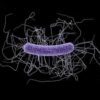If you’re here, it’s likely you’re concerned about your child and want to know more about PANS/PANDAS. Maybe you have a diagnosis, maybe you don’t. But as a parent, there’s nothing worse than watching your child struggle — especially if you’re not sure how to help them.
If you’ve seen dramatic and sudden changes in your child’s behavior, the problem may go deeper than a developmental phase, or even a mental health challenge. Sometimes sudden behavior and demeanor changes are the result of a medical condition.
IS THIS YOUR CHILD?
⇨ OCD — obsessive-compulsive disorder
⇨ Anxiety
⇨ Depression
⇨ Emotional changes
⇨ Irritability
⇨ Aggression
⇨ Oppositional behavior
⇨ Behavioral regression
⇨ Developmental regression
⇨ Deterioration in school performance
⇨ Concentration difficulties
⇨ Increased urinary frequency
⇨ Severely restricted food intake
⇨ Sleep disturbances
⇨ Tics
⇨ Sensory or motor abnormalities
These symptoms, especially if they came on suddenly, can point to PANDAS, (Pediatric Autoimmune Neuropsychiatric Disorder associated with Acute Streptococcal Infection) or PANS (Pediatric Acute-onset Neuropsychiatric Syndrome).
These disorders baffle parents, and unfortunately many doctors as well. If you’ve seen these symptoms in your child, but haven’t been able to get answers, or if you’ve got a diagnosis of PANS or PANDAS and aren’t sure what to do next — read on.
In this article, we’ll take a look at both PANDAS and PANS — how they manifest, how they’re diagnosed, and what researchers believe causes them.
Then in the coming weeks we’ll be digging deeper. If your child suffers with PANS or PANDAS, you want answers. So we’ll be doing a deep dive into what you can do to help your child recover.
WHAT IS PANDAS?
PANDAS was first reported in 1998 by a team at the National Institute of Mental Health, which is part of the NIH.
PANDAS is triggered by an immune response gone wrong after a Streptococcal–A (GABHS) infection. Children’s immune systems are equipped to fight off infections. But strep bacteria can be tricky. Pathogens like strep are able to hide from the immune system by masking themselves as molecules regularly found in the body.
Eventually the immune system identifies the strep bacteria and mounts an attack, although because the strep bacteria are cleverly disguised, the antibodies get confused and may start to attack the body’s own tissues by mistake. In the case of PANDAS, these antibodies attack parts of the brain.
The symptoms come on quickly. You may see your perfectly normal, happy child change dramatically — seemingly overnight.
PANDAS is triggered by strep. And even though the changes in your child’s demeanor will happen suddenly, it may take up to six months between the strep infection and the onset of symptoms.
It’s possible for your child to have an undetected strep infection. Most people think of strep as a throat infection, but strep can affect other parts of the body as well. And you may not even know it’s happening.
So even if your child wasn’t diagnosed with strep, these sudden and disturbing symptoms could still be the result of PANDAS.
WHILE A STREP INFECTION WAS THE INITIAL TRIGGER, MANY PANDAS SYMPTOMS ARE NEUROLOGICAL AND EXPRESS THEMSELVES BEHAVIORALLY:
⇨ Obsessive, compulsive, and repetitive behaviors
⇨ Frequent mood changes
⇨ Depression and suicidal thoughts
⇨ Fear, panic attacks, separation anxiety
⇨ Incessant screaming
⇨ Regression — emotional and developmental
⇨ Hallucinations — visual or auditory
CHILDREN MAY ALSO EXHIBIT PHYSICAL SYMPTOMS SUCH AS:
⇨ Tics
⇨ Sleep disturbances
⇨ Restrictive eating
⇨ Sensitivity to light, sound, and touch
⇨ Regression in fine motor skills
⇨ Difficulty focusing
⇨ Hyperactivity
HOW IS PANDAS DIAGNOSED?
PANDAS is primarily a clinical diagnosis, meaning your doctor will make a determination based on your child’s history and symptoms. Many doctors also run labs to support a diagnosis of immune dysregulation including strep titers (ASO) and the presence of autoantibodies implicated neuropsychiatric disorders (The Cunningham Panel™).
IN ORDER TO DIAGNOSE PANDAS, THE DOCTOR WILL LOOK AT THESE 5 CRITERIA:
- Presence of significant obsessions, compulsions, and/or tics
- Abrupt onset of symptoms or a relapsing remitting course of symptom severity
- Onset of symptoms before puberty — average age is 6-7
- Previous streptococcal infection
- Association with other neuropsychiatric symptoms like hyperactivity, anxiety, mood changes, or developmental regression
IS PANDAS TREATABLE?
The short answer is, yes. But it’s more complicated than that.
PANDAS is a newly recognized condition so research is limited. And many doctors misdiagnose it. They’ll assume the symptoms are entirely psychiatric in nature so they’ll miss the underlying medical cause.
But it is possible to treat PANDAS. The first step is to eradicate any remaining Streptococcal-A (GABHS) infection. This is typically accomplished with antibiotics. And sometimes this treatment is all that’s needed.
For many children, however, a single course of antibiotics does not solve the problem.
Thankfully, antibiotics are not the only healing modality available to children with PANDAS. I work with PANDAS patients all the time. I utilize a variety of personalized holistic protocols that gently detoxify and bring the body back into balance. Recovering from PANDAS is not an easy road for the child — or the parent — but there are things you can do.
WHAT’S THE DIFFERENCE BETWEEN PANDAS AND PANS?
A child with PANS, or Pediatric Acute-onset Neuropsychiatric Syndrome, will exhibit similar symptoms to PANDAS. The main difference is that PANDAS is triggered by a strep infection. PANS is a newer diagnosis that includes all cases of abrupt onset OCD or severely restricted food intake in children — including those where strep is not involved. PANDAS is the only known subset that falls under the umbrella of PANS.
PANS can be triggered by many different infectious agents, including influenza, chicken pox, and mycoplasma pneumoniae. Lyme disease may also trigger the neuropsychiatric symptoms that are included in the criteria for PANS.
A PANS DIAGNOSIS IS BROADER AND INCLUDES A VARIETY OF TRIGGERS INCLUDING:
⇨ Non-strep infectious agents
⇨ Immune factors
⇨ Environmental factors
IN ORDER FOR A CHILD TO BE DIAGNOSED WITH PANS, THEY MUST EXHIBIT AT LEAST TWO OF THE FOLLOWING PANS SYMPTOMS:
⇨ Anxiety
⇨ Emotional lability (rapid and intense mood changes) and/or depression
⇨ Irritability, aggression, and /or severely oppositional behaviors
⇨ Deterioration in school performance
⇨ Sensory or motor abnormalities
⇨ Somatic signs including sleep disturbances, enuresis (involuntary urination), or urinary frequency
Because the two conditions are similar, you’ll often see PANS and PANDAS included together in studies and articles.
HOW COMMON IS PANS/PANDAS?
It’s estimated that 1 in 200 children are affected by PANS/PANDAS. But it’s likely that those numbers are low. These are relatively newly identified conditions, and many doctors miss them.
And because diagnosis is more complicated than running a simple test, misdiagnosis is probably common.
But it’s not just PANS/PANDAS that is affecting the mental health of children. In fact, the statistics on psychiatric disorders in children may surprise you:
😲 500,000 children are diagnosed with OCD in the US alone
😲 138,000 children diagnosed with Tourette’s Syndrome
😲 1.5 million children diagnosed with anxiety, phobias, OCD and/or bipolar disorder
The majority of these conditions show up between the ages of 4 and 9. But children can be affected at any age. The breakdown looks like this:
1-3 years — 11%
4-9 years — 60%
10-13 years — 19%
Over 14 years — 1%
If your child is suffering with one of these conditions, I know how hard it is. There is nothing worse than the helpless feeling that comes from watching your child struggle when you’re not sure what to do.
Over the next few weeks, we’ll be doing a deep dive into PANS/PANDAS. I’ll share what I’ve learned in my practice over the past 18 years, including how and why our children are sick — and what to do about it.
So stay tuned!
In the meantime, I have some resources available to help and support you.
✔ You can join my twice-monthly newsletter here to get more information on PANS/PANDAS, along with tips to improve and protect the health of you and your family.
✔ I am also starting a PANS/PANDAS private Facebook group for parents of affected children. In this group you’ll find a place to share wins and losses, to support and be supported, and most importantly, to get your questions answered.
If you’d like to join this group, click here. I’d be happy to add you.
You don’t have to go through this alone.
RESOURCES
Photography by Jocelyn Lee







